You might be wondering what the restoration crew does around the site all year. Well, one thing that keeps us busy every month of the year is non-native invasive control. It seems that every time we turn around there’s another invasive species.
As we head into late spring and summer we thought it would be nice to introduce our followers to some plants that have escaped from our neighbors yards, including upstream neighbors, and settled into our natural spaces often out competing the natives and keeping us busy removing and controlling them. A few days ago I went out and took pictures of some of our invasives in their spring growth. Use the list of names and identifying characteristics below and match them to the correct pictures beneath.
GARLIC MUSTARD (Alliaria petiolata)
Flower: Each flower has 4 white petals, which is a characteristic of mustards.
Fruit: The fruits are slender, erect capsules.
Leaves: first-year leaves are kidney-shaped with scalloped margins; leaves of mature, second year plants are heart-shaped with toothed margins and pointed tips.
BUSH HONEYSUCKLE (Lonicera maackii and Lonicera × bella)
Shrub 6–20 feet tall
Flower: 1-inch long fragrant paired tubular flowers with narrow petals; white turning yellowish with age
Leaves: opposite, narrowly elliptical with slightly fuzzy undersides
Fruit: red berries in the fall
Branching: opposite with hollow stems
JAPANESE HONEYSUCKLE (Lonicera japonica)
Perennial vine
Flowers: bi-lobed, white turning yellow, highly fragrant
Leaves: opposite, ovate to oblong, 1–3 inches long, entire (smooth) margin except young leaves which are often deeply toothed
Fruits: black in the fall
JAPANESE HOP (Humulus japonicus)
Flowers: Male and female flowers occur on separate plants. Male flowers are small, greenish-yellow. Female flowers develop on drooping, cone-like structures with overlapping scales.
Leaves: opposite, palmately divided (5–7 lobes), rough to touch
SWEET AUTUMN CLEMATIS (Clematis terniflora)
Perennial vine
Flower: White flowers with four petals are produced in late summer through fall.
Leaves: opposite, compound 3 leaflets
WINTER CREEPER (Euonymus fortunei)
Woody vine
Flower: Flowers are in clusters. Individual flowers are yellow-green and have five petals.
Leaves: opposite leaves are dark green with silvery-white veins, oval, slightly toothed, glossy and less than an inch long.
Fruit: Fruits are found in a pinkish-red capsule containing orange seeds.
LESSER CELANDINE (Ficaria verna)
Flowers: buttercup like flowers. Bright yellow with 8–12 glossy petals.
Leaves: spirally-arranged dark green, heart-shaped, 1–2” long and bluntly toothed
Spreads by tubers
STAR OF BETHLEHEM (Ornithogalum umbellatum)
Flower: white, 3 sepals and 3 petals form an attractive star
Leaves: grass-like, dark green, rolled inward with white center vein
Spread rapidly by bulbs
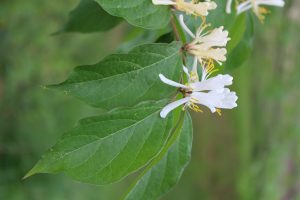 |
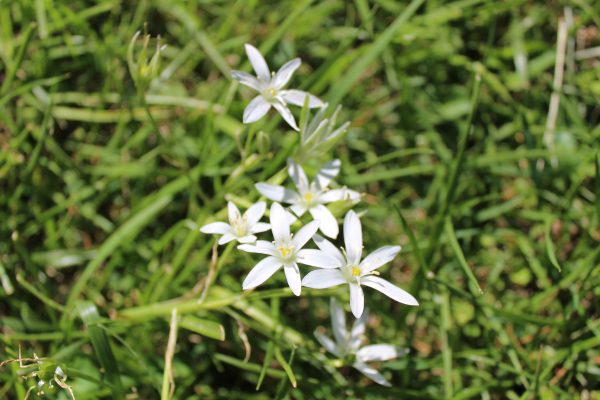 |
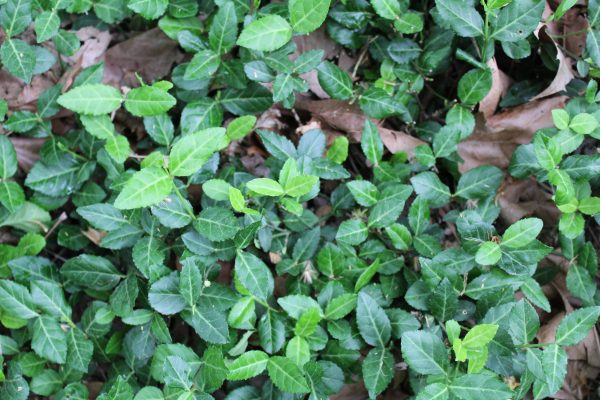 |
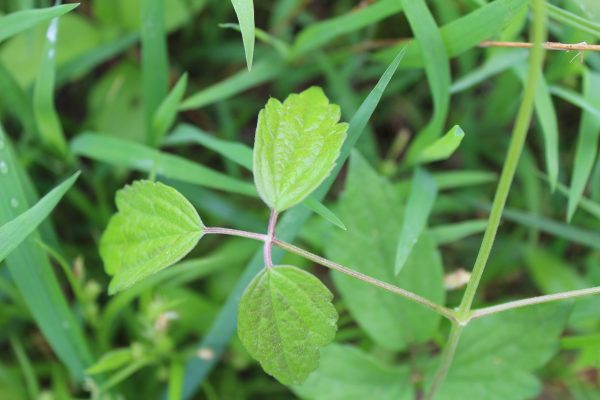 |
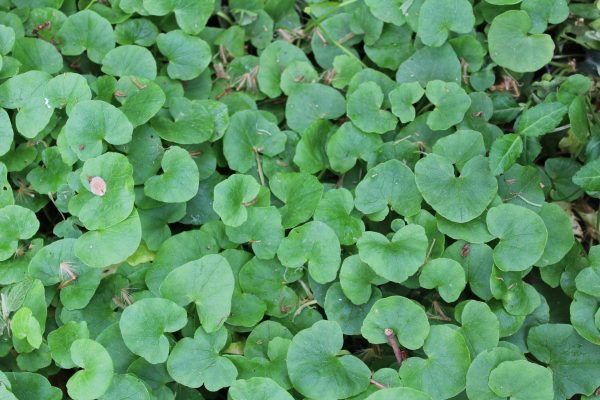 |
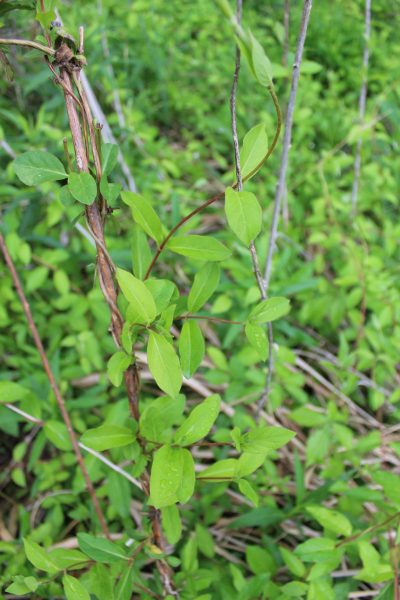 |
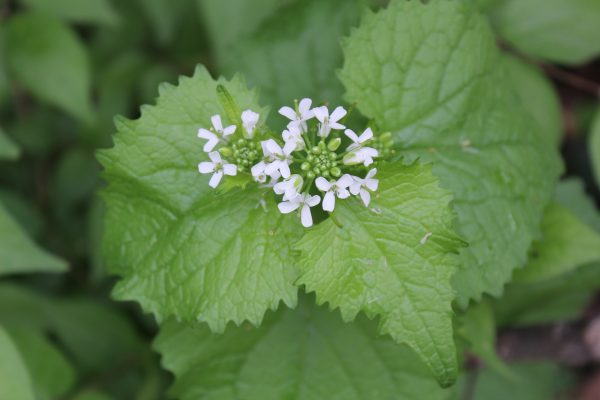 |
 |
Answers:
- BUSH HONEYSUCKLE (Lonicera maackii and Lonicera × bella)
Introduced: Bush honeysuckle is a shrub introduced from Asia in the mid to late 1800s for landscaping, wildlife cover and erosion control.
Ecological Threat: Bush honeysuckle leafs out early and loses its leaves late. This means that it outcompetes our native plants for light, especially our native woodland plants that need the early spring sun to complete their life cycle (flower, fruit, and gather energy) before the trees leaf out. Bush honeysuckle may also secrete a chemical into the soil that hinders the growth of trees.
Control at LREC: Bush honeysuckle can be found throughout the site, mostly as smaller seedlings. Until there is a regional honeysuckle eradication effort the bush will continue to be a problem as birds deposit seeds from outside the center. We control bush honeysuckle by hand pulling and cutting and painting with glyphosate throughout the year.
Native Alternatives: Ninebark (Physocarpus opulifolius), fragrant sumac (Rhus aromatica), buttonbush (Cephalanthus occidentalis), spicebush (Lindera benzoin), southern arrow wood (Viburnum dentatum) - STAR OF BETHLEHEM (Ornithogalum umbellatum)
Introduced: Native of Europe and escaped cultivation in the 1830s
Ecological Threat: Can displace native species that bloom during the spring
Control at LREC: Mechanical removal by digging up the bulbs
Native Alternatives: Any native - WINTER CREEPER (Euonymus fortunei)
Introduced: Introduced from China as an ornamental in 1907
Ecological Threat: Wintercreeper is very adaptive to a variety of light and soil conditions. Therefore it is a threat to many different ecosystems. It forms a dense mat, which can quickly out compete native groundcover species. It also depletes nutrients and moisture in the soil. Climbing wintercreeper can smother shrubs and small trees. The vine will only produce flowers and therefore seeds if allowed to climb. Birds spread the seed by eating the fruit and depositing the seeds in their droppings.
Control at LREC: Wintercreeper has overtaken the woodlands at LREC. We use chemical spraying in areas where wintercreeper has outcompeted most species and manual removal in areas where we have removed wintercreeper in the past and in more sensitive areas.
Native Alternatives: golden ragwort (Packera aurea), purple poppy mallow (Callirhoe involucrata), wild ginger (Asarum canadense), rose verbena (Glandularia canadensis) - SWEET AUTUMN CLEMATIS (Clematis terniflora)
Introduced: Introduced from Japan and China as an ornamental vine and is still widely sold and promoted.
Ecological Threat: This species will invade forest and stream edges, prairies and wherever there is full sun or partial shade.
Control at LREC: Three years ago we discovered sweet autumn clematis in our south prairie. We are hand cutting and painting in the spring and summer and removing flower and seed heads in the fall to help prevent spreading.
Native Alternatives: Most vines are pretty aggressive, but these are a few lovely natives. Passion flower (Passiflora incarnata), Trumpet creeper (Campsis radicans), American bittersweet (Celastrus scandens) - LESSER CELANDINE (Ficaria verna, formerly Ranunculus ficaria)
Introduced: Introduced from Europe and West Asia as an ornemental plant and is still sold in a variety of colors.
Ecological Threat: Forms dense mats of vegetation in early spring that easily out competes native spring ephemerals. Spreads by underground tubers.
Control at LREC: Very difficult to control. Lesser Celandine has a very short life cycle. This requires us to spray with glyphosate in the very early spring when weather permits and before the native spring woodland plants emerge.
Native Alternatives: Wild ginger (Asarum canadense), blood root (Sanguinaria canadensis), trilliums (trillium spp.), golden ragwort (Packera aurea) - JAPANESE HONEYSUCKLE (Lonicera japonica)
Introduced: Japanese honeysuckle was introduced into the US in the 1800s as an ornamental. It is also used for erosion control and wildlife forage.
Ecological Threat: Japanese honeysuckle is an aggressive vine that can cover and destroy native understory plant communities along with girdling and killing shrubs and young trees.
Control at LREC: Japanese honeysuckle is one of our most difficult invasives to eradicate. Because of the airy vine it is difficult to spray without killing the surrounding vegetation. Most Japanese honeysuckle removal at LREC is done by cutting and painting the tiny vines or spraying areas where this is no or little native plant species remaining.
Native Alternatives: There are two beautiful native honeysuckle vines: yellow honeysuckle (Lonicera flava) and grape honeysuckle (L. reticulate) - GARLIC MUSTARD (Alliaria petiolata)
Introduced: Garlic mustard was introduced in the 1860s as a culinary herb and is now an invasive species in much of the United States.
Ecological Threat: Garlic mustard crowds out native plants and is known to produces chemicals that inhibit the growth of some plants and are toxic to the larva of native butterflies.
Control at LREC: Garlic mustard is found most often in the woodlands along the creek, but can be found through out the site primarily in shadier areas. We control garlic mustard by hand pulling throughout the early spring.
Native Alternatives: Wild ginger (Asarum canadense), blood root (Sanguinaria canadensis), trilliums (trillium spp.),golden ragwort (Packera aurea) - JAPANESE HOP (Humulus japonicus)
Introduced: Japanese hop was introduced from Eastern Asia in the 1800s for use in Asian medicine and as an ornamental vine.
Ecological Threat: Found most often along rivers and streams and grows so quickly it can easily out compete established vegetation in areas where there is damp soil. The seeds germinate in early spring and grow aggressively until the first frost, which will kill the vine.
Control at LREC: Hop is found mostly along Deer Creek and because it doesn’t tolerate shade well it generally remains along the creek although we do find it on the edge of the woodlands and in the prairies on occasion. The removal is done by manual pulling or spraying with glyphosate.
Native Alternatives: giant cane (Arundinaria gigantea), sedges (Carex spp), swamp milkweed (Asclepias incarnata), creek oats (Chasmanthium latifolium)
Source: Missouri Department of Conservation (MDC) website